Modular origami is a technique that can be used to build some pretty interesting and impressive models of mathematical objects. In modular origami, you combine multiple units folded from single pieces of paper into more complicated forms. The Sonobe unit is a simple example unit from modular origami that is both easy to fold and compatible for constructing a large variety of models. Below are a few models that are easy to make using this unit.
Cube
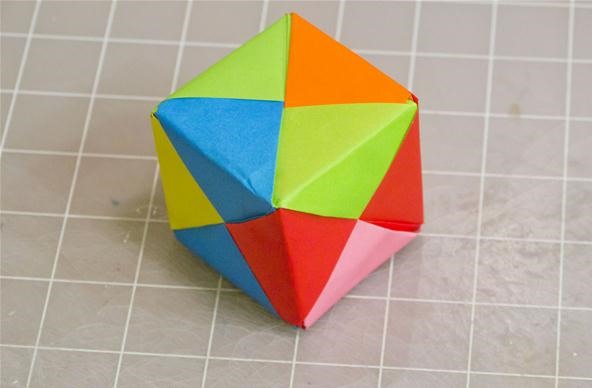
Octahedron

Icosahedron

In the rest of this post we are going to learn how to make the Sonobe unit and each of these models.
Materials and Tools
- Paper (square origami paper is preferred as it folds much better)
- Scissors (if paper isn't square)
How to Make Square Paper
All of the instructions below assume square paper is being used. If you need to make square paper, here is a fast way to do it.
Take an ordinary piece of paper and fold it diagonally. Cut off the remaining strip.

Unfold your square piece of paper.

The square created above is 8.5 inches on a side. I like using smaller paper so I usually fold in half vertically, and then horizontally. This makes crease marks that I cut along to make 4 square sheets that are 4.25 inches on a side. This seems to be a good size for modular origami.

How to Make a Sonobe Unit
Take a square piece of paper:

If you are using colored origami paper, flip it so it is colored side down:

Fold in half horizontally:

Unfold. You should have a horizontal crease in the middle:

Now you are going to fold the paper in fourths. Start by folding the top down to meet the crease in the middle:

Fold the bottom up to meet the crease in the middle:

Unfold the top:

Fold the bottom corner up to meet the upper crease:

Unfold. Rotate 180 degrees. Fold the bottom flap up to meet the middle crease:

Fold the bottom corner up to meet the upper crease:

Fold the top down:

Refold the top corner down along the previously formed crease. Tuck it into the bottom flap:

Flip the paper over:

Fold the corners over:

Fold the corners in to form a square. First one corner:

Now the other corner:

Flip the unit over. It is complete. There should be two triangular pockets that you can use to insert other units into.

When making the octahedron, or icosahedron you need to make an additional diagonal fold across the square part of the unit.

This post/video shows the process of making a Sonobe unit in more detail.
How to Make a Cube from 6 Sonobe Units
Insert one Sonobe unit into the pockets of another unit:

Insert another Sonobe unit:

Now fold the squares together to form right angles and connect the units. You should have 3 faces of the cube and one corner.

Continue forming the cube. It should look like this before inserting the last unit:

Finished cube. They can be fun to number as large dice.

Colored version:

This post/video shows how to make this origami cube in more detail.
How to Make an Octahedron Out of 12 Sonobe Units
You must use the units that have an additional fold down the middle of the square. Place three units together to form a triangular pyramid.

Build another pyramid connected to the first:

Add a third pyramid:

For an octahedron, there should always be cycles of four pyramids around a point. Use one Sonobe unit to connect the three pyramids, forming a fourth. The whole object will now bend into the third dimension.

To finish the octahedron, you have to keep attaching units, always forming triangular pyramids in cycles of 4.

Here's a colored version. Note that if you look at it this way you can see triangles.

But if you look at it this way, then you see squares. This is because 4 triangles meet at each vertex in a octahedron.

This post/video shows how to make the octahedron in more detail.
How to Make an Icosahedron from 30 Sonobe Units
You must use the units that have an additional fold down the middle of the square. Place three units together to form a triangular pyramid.

Keep forming pyramids connected to each other until you have a cycle of five of them connected around a point.

Keep connecting pyramids together in cycles of 5. It will begin to curve into a ball:

Connecting the last couple up can be a little challenging sometimes. Here's the completed model:

The colored version. Notice the triangular figures.

From this angle, notice how you can see pentagons and pentagrams. This is because on an icosahedron, 5 triangles meet at each vertex.

This post/video shows how to make the icosahedron in more detail.
Show Off Your Work
If you complete any of these projects, any of the variations, or any of the other previous Math Craft projects, please share with us by posting to the corkboard. Maybe you just have something cool that you made or saw on the web—you can share that, too!
If you like these types of projects, let me know in the comments. If you have any other ideas you would like to pursue, let me know in the forum.
Next post, we're going to create slightly more complicated objects from Sonobe Units.
Just updated your iPhone? You'll find new emoji, enhanced security, podcast transcripts, Apple Cash virtual numbers, and other useful features. There are even new additions hidden within Safari. Find out what's new and changed on your iPhone with the iOS 17.4 update.



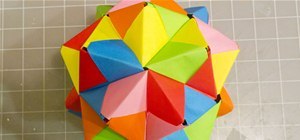
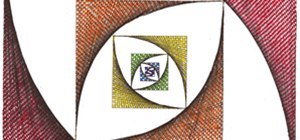
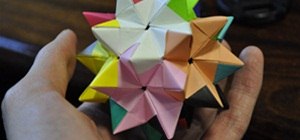
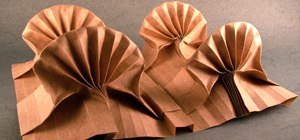
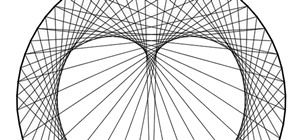
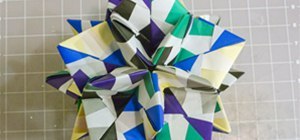
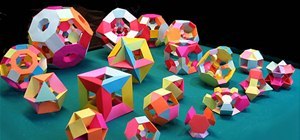
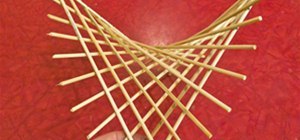
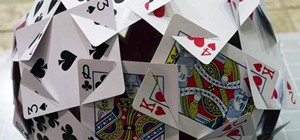
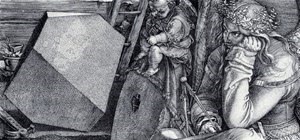

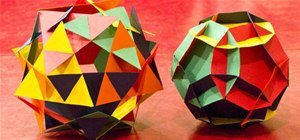
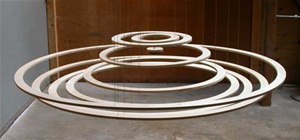
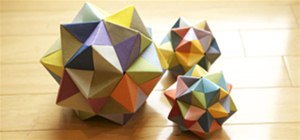
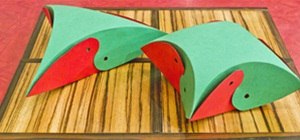
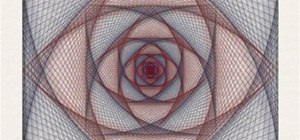
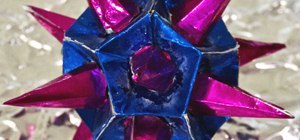
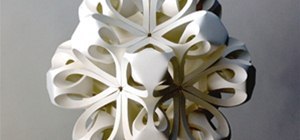
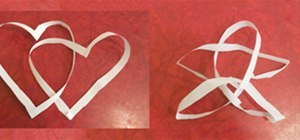
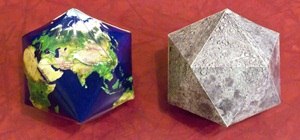
21 Comments
finally did the octahedran. just finished... will post pics tomorrow. i found the instructions for the sonobe unit very clear / easy, but got a bit lost after connecting the three pyramids. i played around for a while until it somehow came together.
Cool. The first time you build all of these objects you really have to experiment and play. It was the same for me when I first built them a few years back...and I have a pretty strong background in Math. The puzzle is part of the fun!
Hi there:
As I write this note, I'm folding Sonobe units in order to create a "hedron" which has cycles of 6. Can you tell me if you have ever tried this before? Can any one help me to determine if it is possible?
Once I have an answer to this question, my next move would be to try to determine if there is a relation between the cycles and the number of units required to build a "hedron"; and if it exists, what would it be.
Any comment you want to do would be very helpful.
Thanks.
The problem with cycles of 6 is that you are forming hexagons. Hexagons actually are capable of tiling a plane. Unfortunately this means if you only make cycles of six that you will never get it to close into a three dimensional shape.
Thanks Cory.
Your answer really helps me. Now another question arises, which has to do with the tilling thing: In the case of the octahedron illustrated before, there are cycles of length 4 and that implies that you make squares, which are capable to till a plane too, but in this case they get in to a 3 dimensional shape; how is that possible?
Maybe I haven't quite understood the explanation you kindly gave to me, is that the case?
Anyway, thanks again; I'll keep continue thinking to get a full comprenhesion about this issue.
Bye
Ah. Good point. I actually didn't explain properly before. When you look at the cycles as where the joints come together for the polygons then you are actually looking at where 4 equilateral triangles join together for the octahedron. If add up all of the angles that meet you get 460=240. Since this is less than 360 the triangles must curve down. If you do cycles of 6 and look at them as joints then you actually have 6 equilateral triangles coming together. Since 660=360 the triangles will actually lie flat.
Hi Cory:
Now I understand, really I do. Thanks. Here I share what I did with the same modules.
Thanks again
Those look great. Thanks for sharing.
Hi again Cory:
Looks like someone knows how to do it with cycles of length 6:
Now that I'm watching this image, I'll try it again and I'll share mi results as soon as I get them.
Thanks
That does have cycles of 6 but not just cycles of 6. For the whole object there are actually 12 cycles of 5 that make it curve. I've never made one this big but have made one with 12 cycles of 5 and 20 cycles of 6 just like the pattern of a soccer ball.
Thanks for the tip Cory, I just finished making a ball the way you described. I had folded 120 units but only ended up using 87.
Is it possible to construct a module out of 15 sonobes??
what do you think?!
I'm having troubles building the pyramid part
Nevermind i fixed it
now i'm having trouble putting together the octahedron
I actually made a VERY advanced ball before
Hello everyone, I was wondering if anyone here can tell me whether it's possible to connect two Sonobe cubes with Sonobe modules diagonally... I tried and failed. :-( I think it takes two different kinds of modules to make the diagonal connection and I can't figure out how to make them. Background: I want to make 3D letters (like with building blocks) and some letters such as A or D require diagonal connections between two "blocks". I'm not an Origami genius or even great at Maths so I don't really know how to solve this problem. It would be great if anyone could help!
I have created the star ball. with 20 points.
i have sat here for 3 hours trying to make the Octahedron and it has not worked at all the video does not have a more discripion of how to do it.
Share Your Thoughts